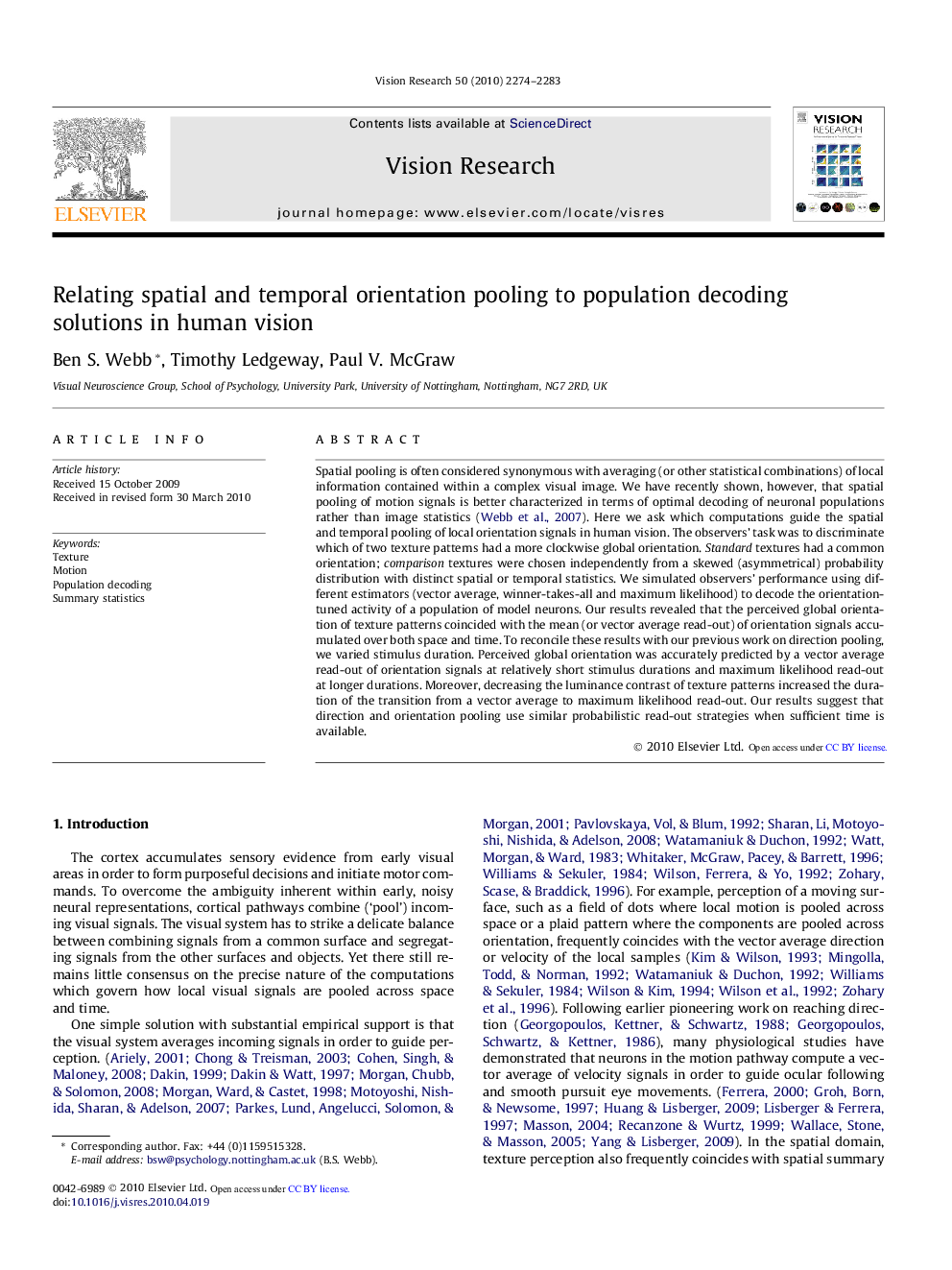| کد مقاله | کد نشریه | سال انتشار | مقاله انگلیسی | نسخه تمام متن |
|---|---|---|---|---|
| 6203838 | 1263456 | 2010 | 10 صفحه PDF | دانلود رایگان |

Spatial pooling is often considered synonymous with averaging (or other statistical combinations) of local information contained within a complex visual image. We have recently shown, however, that spatial pooling of motion signals is better characterized in terms of optimal decoding of neuronal populations rather than image statistics (Webb et al., 2007). Here we ask which computations guide the spatial and temporal pooling of local orientation signals in human vision. The observers' task was to discriminate which of two texture patterns had a more clockwise global orientation. Standard textures had a common orientation; comparison textures were chosen independently from a skewed (asymmetrical) probability distribution with distinct spatial or temporal statistics. We simulated observers' performance using different estimators (vector average, winner-takes-all and maximum likelihood) to decode the orientation-tuned activity of a population of model neurons. Our results revealed that the perceived global orientation of texture patterns coincided with the mean (or vector average read-out) of orientation signals accumulated over both space and time. To reconcile these results with our previous work on direction pooling, we varied stimulus duration. Perceived global orientation was accurately predicted by a vector average read-out of orientation signals at relatively short stimulus durations and maximum likelihood read-out at longer durations. Moreover, decreasing the luminance contrast of texture patterns increased the duration of the transition from a vector average to maximum likelihood read-out. Our results suggest that direction and orientation pooling use similar probabilistic read-out strategies when sufficient time is available.
Journal: Vision Research - Volume 50, Issue 22, 28 October 2010, Pages 2274-2283